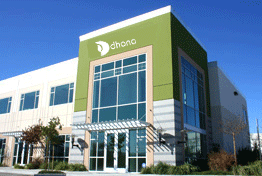The various products of Dhana Crop Sciences are very cost eff ective & with better performance than the products available in this space
- Home
- Crop Solutions
- Micro Nutrients
Micro Nutrients
Multi Micronutrient Fertilizers
Soil applications and foliar sprays as per prescribed formulas.
Chelated Micronutrients
Chelated micronutrients are widely used in agriculture and are strongly promoted by the fertilizer industry. Exactly what are they and why should they be used?
The word chelate is derived from the Greek word for "claw". In fertilizer technology, it refers to inorganic nutrients that are enclosed by an organic molecule. The example below shows how a nutrient such as iron combines with the chemical EDTA to form a chelate. The EDTA surrounds the inorganic iron and forms weak bonds with it, We ectively giving the nutrient an organic coating. Chelates are useful for micronutrients applied to alkaline soils. Iron, manganese, zinc and copper react with the ions found at high pH to form insoluble substances. As a result, the nutrients are made unavailable to plants. The organic coating in the chelate prevents these reactions from occurring in the soil. The plant roots take up the chelated nutrient and the chelate releases the nutrient within the plant. Chelated nutrients are also useful for foliar application. Plant leaves have a waxy coating that prevents them from drying. The wax repels water and inorganic substances making it di cult for inorganic nutrients to penetrate into the leaf. However, organic molecules can penetrate the wax.

The organic coating around the chelated nutrient allows it to penetrate through the wax into the leaf. Once in the leaf, the chelate releases the nutrient so that it can be used by the plant.
The bond between the organic chemical and the inorganic nutrient must be strong enough to protect the nutrient, but must be weak enough to release the nutrient once it gets into the plant. Also, the chelating agent must not be harmful to plants. Not all nutrients can be chelated. Iron, zinc, copper, manganese, calcium and magnesium can be chelated, the other nutrients cannot. Several organic substances (chelating agents) are used to produce chelates. EDTA is the most common synthetic chelating agent and is used for both soil and foliar applied nutrients. DTPA is used mainly for chelates applied to alkaline soils. It is more effective than EDTA but is usually more expensive. Iron chelates made with HEDTA and EDDHA are the most effective iron fertilizers on high pH soils but are also the most expensive.
We Offer
EDTA Group: Zinc | Copper | Calcium | Magnesium | Iron | Manganese
IDHA Group: Zinc | Ferrous | Copper | Manganese
Amino Acid based Chelates: Zinc | Ferrous | Copper | Manganese
Mineral Gluconates / Amino Glycinates
Mineral gluconate is the mineral (K, Ca, Mg, Zn and Fe) salt of gluconic acid. Gluconic acid is formed by fermenting Glucose in the presence of Micro organisms. It is soluble and bio-available.
The advantages of mineral gluconates in agriculture is that the Glucanates readily disassociate with respective metal ions thereby releasing the required minerals to the plant.
Chelation, in relation to this subject, is the chemical process of bonding a mineral to an amino acid Glycene. When this is done, the absorption and "bioavailability" of the mineral may be increased, meaning that the delivery of the mineral and its usability can be enhanced: One of the natural means of increasing bioavailability of minerals is chelation. The process involves bonding minerals, such as zinc or iron, to amino acids, in a stable form.
We are in Gluconate / Glycinate form: - Potassium | Zinc | Iron | Calcium | Copper | Manganese | Magnesium | Sulphur | N,P,K
No runoff of fertilizers into ground water
Over 20 years of experience we’ll ensure you always get the best guidance. We serve a clients at every level of their organization we can be most useful, whether as a trusted advisor to top trusted our management coach for fronts line employees.

